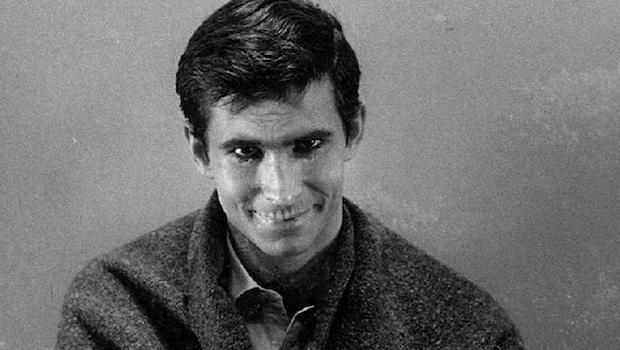Psycho at 60: Celebrating Alfred Hitchcock's 10 most iconic scenes
To celebrate Psycho turning 60, we look at some of the best moments in the Master of Suspense's filmography

Alfred Hitchcock is, without a shadow of a doubt, one of the most influential filmmakers of all time. The director shunned the studio system and its strict rules, instead creating his own unique visual language. To this day, read any film review and critics will call certain techniques or motifs "Hitchcockian". Known for his genre films, Hitchcock was notoriously specific in every detail, crafting complex characters and themes that only a master of the medium could – themes which often explored the darkest depths of the human psyche, obsession, sex, death, and more.
Arguably his most well-known film is the 1960 horror classic, Psycho, a black and white slow-burn horror that follows Marion Crane (Janet Leigh) as she checks into the mysterious Bates Motel while on the run from her employer. She is soon killed by a shadowy figure in the shower, and her sister comes to look for her. What unfolds is a grim thriller that remains hugely influential. In celebration of Psycho turning 60, we’ve put together 10 of the most iconic scenes in Hitchcock’s filmography. Here's exactly why the director earned his title, Master of Suspense.
- The best horror movies of all time
- The 10 best Alfred Hitchcock movies
Psycho (1960) – The shower scene
Arguably the most iconic scene in any Alfred Hitchcock movie (let alone in the history of film), the shower scene in Psycho remains masterful even by today's standards. When the unknown killer pulls back the curtain and begins calmly stabbing at Marion Crane, the instantly iconic shrieking violins start, entering the collective subconscious of an entire generation. At the time, it was shocking to see so much nudity and blood on screen. But Hitchcock was extremely clever in that he only gave the illusion of it all; the editing and cuts suggest a horrific murder when in reality we only see glimpses of a knife in the air and the victim's stomach and arms outstretched. Hitchcock played the system.
The Birds (1963) – Gas station attack
In The Birds, wealthy socialite Melanie Daniels (Tippi Hendron) follows a man to a small Northern California town in the pursuit of love. It all takes a dark turn, though, when the birds in the town begin attacking people. In this particular scene, gasoline pools towards a car and an unsuspecting man as he lights his cigar. Onlookers a few stories high, including Melanie, try to get his attention, but he drops the lighter and erupts in a fiery explosion. As the fire travels along the gasoline trail to the nearby gas station it came from, Hitchcock cuts back and forth between the fire and Tippi Hendron’s terrified face. The tight-framed close ups and (literal) birds-eye-view darting back and forth are enough to put any audience on edge.
Vertigo (1958) – The Bell Tower
Vertigo is one of the most critically acclaimed movies of all time, and maybe Hitchcock’s most unique. It explores Scottie’s (James Stewart) obsession with a young woman and at times feels almost supernatural, with the score taking it to new heights of surrealism. In the breathtaking finale, we revisit the bell tower, where the object of his obsession, Madeleine, had died. By this point, Scottie has become the antagonist of his own story, and his infatuation and instability is downright terrifying. As he follows Judy – who he has manipulated into becoming a new Madeleine – up the stairs of the bell tower, his vertigo kicks in and he must conquer his phobia to find the truth. The cuts between James Stewart’s petrified expression and the ominous spiral staircase are enough to make anyone nauseous, and let to the famous camera dolly-zoom technique that's used here to become dubbed the "vertigo shot".
Dial M for Murder (1954) – The attempted murder
Dial M for Murder is a chilling story of a man who blackmails someone into killing his wife for her infidelity. He lays out his plan in highly specific detail, which only adds to the tension that's festering as we wait for him to take his chance. When the moment finally arrives, Hitchcock’s camera holds steady on the face of cinematic darling Grace Kelly, distracted by a well-planned phone call. As her killer approaches from the shadows, we delicately move 180 degrees around her while Dimitri Tiomkin’s score bubbles underneath the tension. This nail-biting scene is even responsible for the iconic and memorable shot of Kelly’s hand reaching towards the camera.
North by Northwest (1959) – Outrunning a plane
North by Northwest felt like a Bond movie before there were Bond movies, and it’s exemplified perfectly in this scene. From Russia With Love went so far as to recreate it with a helicopter. The idea that something bad is about to happen has already begun to build before we see the crop-dusting plane appear on screen, as Roger Thornhill waits by a bus station in a relatively quiet and contemplative moment. After a few agonizingly tense moments, he is suddenly being chased down by a plane. With no music or dialogue, it’s enthralling to watch Thornhill race toward the screen. An exquisite example of a chase.
Bringing all the latest movie news, features, and reviews to your inbox
Rebecca (1940) – Meeting Mrs Danvers
From the moment Judith Anderson walks into frame, staring straight down the camera and into your soul, you can gaige everything you need to know about the steely Mrs Danvers. It’s a fleeting and seemingly insignificant moment in the grand scheme of things, but with just a look and Hitchcock’s clever camera movements, Mrs Danvers becomes a looming figure in the classic thriller Rebecca. And her's is a look that is not easy to forget.
Notorious (1946) – The never-ending kiss
Under the Hays Code in Hollywood at the time, there were strict rules that meant two characters couldn't’ kiss for more than three straight seconds. Hitchcock, once again, played the system, and depicted intense and prolonged passion without breaking any rules. Ingrid Bergman’s Alicia and Cary Grant’s Devlin tightly embrace and seemingly kiss non-stop, but the director got away with it as in between every peck and smooch the pair spoke to each other. The nearly three-minute makeout session is impossible to look away from, as it captures the youthful passion of two people who just can’t keep their hands off one another.
Rear Window (1954) – Jeff falls from the window
The chilling voyeuristic Rear Window is one of Hitchcock’s more well-known movies, and it rightly deserves its popularity. Many moments in the film deserve a spot on this list, but Jeff’s (James Stewart) face-off with his murderous neighbour is too good to miss. Thorwald is obscured in the shadows just behind our protagonist, as tension builds till it’s hard to bear. When Jeff suddenly replaces the bulb of his camera, almost as though reloading a gun, he blinds Thorwald with his flash. What follows is a gripping fight between the two to overpower one another, where Thorwald ends up throwing Jeff out of the window as neighbours look on horrified.
Strangers on a Train (1951) – The opening scene
What's so interesting about the opening moments of Strangers on a Train is that Hitchcock essentially tells you the whole story at the start. The careful parallel editing suggests the inevitability that these two men will meet, that their fates will eventually cross. During this train journey, Bruno and Guy realise they both long to kill someone, and Bruno suggests they exchange murders to evade the cops. Their paths intertwine in macabre ways, and with this opening scene Hitchcock certainly doesn't underestimate the intelligence of his audience.
Vertigo (1958) – Scottie’s nightmare
Yes, it's another scene from Vertigo, but we couldn't resist! The psychedelic colour and spiralling nature of Scottie's nightmare is instantly memorable. As Bernard Herrmann's score invites us into a dreamworld and Hitchcock's carefully crafted vision, the audience is left with a million questions – some that will remain unanswered. The continous spiral is a remarkable visual motif that the director uses throughout the film, planting ideas in your head without you even realising. There's a reason people call him a master, you know?
Millicent Thomas was once a freelance games and film journalist, writing for publications including GamesRadar, Total Film, Space.com, GamesIndustry.biz, Wireframe, Little White Lies, Culturess, SciFiNow, and more. She is now in international PR and marketing for Ubisoft.



